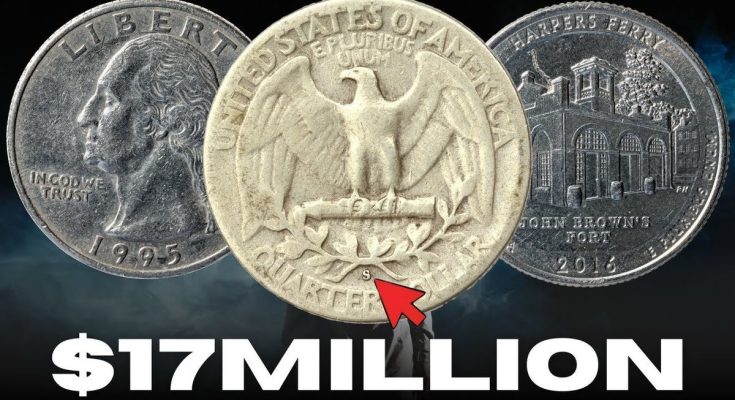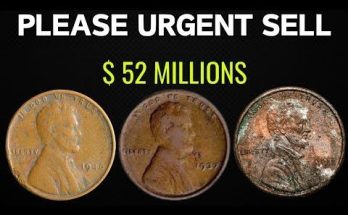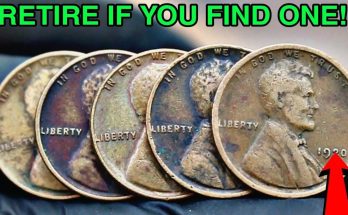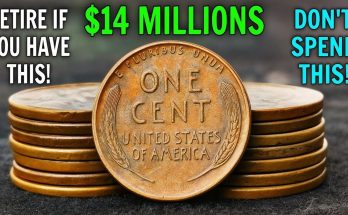Are you sitting on a potential fortune without even knowing it? The United States Mint’s 50 State Quarters Program, which ran from 1999 to 2008, was designed to be a fun, educational series celebrating each state’s unique history and identity. What most people don’t realize is that some of these seemingly ordinary 25-cent coins are now worth hundreds, even thousands, of dollars. The secret lies in a combination of rare minting errors, low mintage numbers, and exceptional condition. Before you spend another quarter, take a moment to check your pockets, your coin jar, or that forgotten stash of change—you might just find a coin that could change your life.
The world of numismatics, or coin collecting, is filled with incredible stories of people who have found hidden treasures in plain sight. While the vast majority of state quarters are worth only their face value, the “ultra-rare” ones featured here are the ones serious collectors are actively hunting for. These aren’t just coins; they’re unique pieces of American history, each with a story of a a small mistake at the U.S. Mint that created a major collectible.
Here are the top 10 most valuable and sought-after state quarters that could make you rich:
1. The 2004-D Wisconsin “Extra Leaf” Quarter This is arguably the most famous and highly-prized error in the entire State Quarters series. Found on the reverse side of the coin, a small die gouge created the illusion of an extra leaf on the ear of corn. There are two variations: the “Extra Leaf Low” and the “Extra Leaf High.” In high grades, particularly uncirculated condition, these coins can sell for thousands of dollars. The “Extra Leaf Low” has an auction record of around $6,000, while the “Extra Leaf High” is also worth a significant amount. This error created a frenzy among collectors when it was first discovered, and it remains a top-tier rarity.
2. The 1999-P Delaware “Spitting Horse” Quarter As the very first state quarter issued, the 1999 Delaware quarter holds a special place in the hearts of collectors. Some of these coins, from the Philadelphia mint, have a distinctive die crack running from the horse’s mouth, making it look as though it is “spitting.” This unique and quirky error is a favorite among collectors and can fetch prices of up to $500 or more, depending on its condition.
3. The 2000-P South Carolina Quarter (MS69 Grade) While millions of these quarters were minted, only a tiny handful have been certified in the near-perfect MS69 grade by professional grading services. Because of their extreme rarity in this condition, they are highly valuable. One example of a 2000-P South Carolina quarter in MS69 condition sold for a staggering $8,000. This is a testament to how much a coin’s condition can influence its value, even for a common design.
4. The 2004-P Texas “Grease Strike-Through Error” Quarter Similar to the South Carolina quarter, this error is about condition and a subtle minting flaw. A “grease strike-through” error occurs when a small amount of grease or debris prevents part of the design from being fully struck onto the coin. For the 2004 Texas quarter, this error is often seen on the “P” mint mark or other parts of the design. A prime example of this coin in MS69 grade has been valued at up to $10,000.
5. The 1999-P Georgia “Deep Die Cap, Double Struck Error” This coin is a truly spectacular rarity. It features a “deep die cap” error where the coin blank, or planchet, became stuck to the die and was struck multiple times, creating a distinctive, thimble-like shape. This unique and dramatic minting error is highly sought after, with some examples selling for over $4,200 at auction.
6. The 2005-P Minnesota “Doubled Die” Quarter The 2005 Minnesota quarter has over 60 known varieties of “doubled die” errors, making it a playground for collectors. Doubled die errors are caused when the die is struck more than once in slightly different positions, creating a blurry or doubled appearance on the design elements. The “Extra Tree” variety, with a distinct doubling on the third and fourth trees, is particularly valuable and can be worth up to $100 or more in uncirculated condition.
7. The 2003-D Maine Quarter (MS68 Grade) This is another example of a high-grade rarity. The 2003-D Maine quarter is not an error coin, but its value comes from its scarcity in a high, certified grade like MS68. Only a limited number of these coins have ever achieved this near-perfect status, making them extremely valuable to collectors who focus on condition. An MS68 example of this coin has sold for approximately $2,300.
8. The 2006-D North Dakota Quarter (MS68 Grade) Similar to the Maine quarter, the 2006 North Dakota quarter in a high-grade like MS68 is a rare find. While millions were minted, very few have survived in such pristine condition. For a numismatist, finding one of these is like discovering a needle in a haystack, with some specimens selling for over $3,700 at auction.
9. The 1999-P Pennsylvania Quarter (MS67 Grade) The 1999 Pennsylvania quarter holds an auction record of over $10,200 for a coin in MS67 condition. While there is no known error with this coin, its value is purely based on its rarity in a superb state of preservation. It shows that even a common coin can be a treasure if it’s one of the best examples ever found.
10. The 2008-D Alaska Quarter (MS69 Grade) The Alaska quarter is a more recent addition to the list of highly valuable coins. A near-perfect specimen in MS69 condition can fetch a high price. One example sold for $2,350 at auction, highlighting how a stunningly preserved modern coin can become a prized collectible.
The bottom line is that the Statehood Quarter Program, while designed for the public, created some truly fascinating and valuable coins. If you want a chance at finding your own small treasure, start by carefully examining your change. Look for any unusual features, like an extra leaf or a “spitting horse,” and pay close attention to the coin’s date, mint mark, and overall condition. Happy hunting!



